Models
In the manual science teachers can find practical steps and examples of how to use the developed pedagogical tools - models, examples and experiments in their everyday educational process. The manual is based on the approach for development of comprehension in science education, in particular the development of reverse thinking and the fact that its existence is a direct sign of understanding. The manual aims to significantly ease the the job of teachers and give in their hands ready-to-use tools to support learning of students, since it is quite a difficult job to create the right models for each science concept and it may take too long to explain without them the new study subject.
A spring pendulum
A spring pendulum (also called elastic pendulum or swinging spring) is a physical system where a piece of mass is connected to a spring so that th ...
Absolute humidity of air
 Scientific definition
Scientific definitionAbsolute humidity is a physical quantity, showing the mass of water vapor in 1 m³ volume of air. Or is it an analogue of air density. ...
Absorption
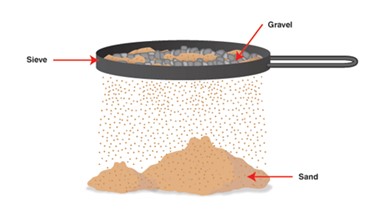 Scientific definition
Scientific definitionLight passing through an optical system can be attenuated by absorption and by scattering. Light apsorption is a physical process during which the ...
Aggregate states of material
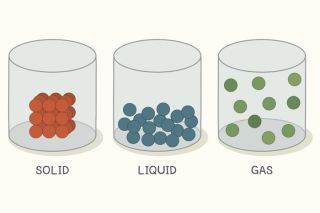 Scientific definition
Scientific definitionThree aggregate states of material are known: solid, liquid and gas. In a solid, constituent particles are closely packed together. As a result, a ...
Atmospheric pressure
 Scientific definition
Scientific definitionAtmospheric pressure is the force per unit area exerted into a surface by the weight of air above that surface in the atmosphere of Earth (or that ...
Balancing a rigid body
A simple mechanical body is said to be in equilibrium if it experiences neither linear acceleration nor angular acceleration; unless it is disturb ...
Capacitor
 Scientific definition
Scientific definitionA capacitor is a device consisting of two electrodes with a dielectric between them. It is intended for temporary storage of electric charge throu ...
Center of mass
The center of mass is a position defined relative to an object or system of objects. It is the average position of all the parts of the system, we ...
Conductors, insulators, and semiconductors
Materials are classified as conductors, insulators, or semiconductors according to their electric conductivity. A conductor is an object or ty ...
Density
 Scientific definition
Scientific definitionDensity can be defined as the property that matter has, whether they are solids, liquids or gases, to be compressed in a given space, the amount o ...
Diffusion
Diffusion is the net movement of molecules or atoms from a region of higher concentration
Diffusion
 Scientific definition
Scientific definitionThe mutual penetration of substances due to the chaotic movement of their building particles. Diffusion is the mutual penetration of substances in ...
Dispersion of light
The dispersion of light is the phenomenon of splitting of a beam of white light into its seven constituent colours (i.e. violet, indigo, blue, gre ...
Electric circuit
Electric circuit, path for transmitting electric current. An electric circuit includes a device that gives energy to the charged particles constit ...
Electric circuit (2)
Electric circuit, path for transmitting electric current. An electric circuit includes a device that gives energy to the charged particles constit ...
Electric circuits
Electric circuit, path for transmitting electric current. An electric circuit includes a device that gives energy to the charged particles constit ...
Electrical resistance
 Scientific definition
Scientific definitionElectrical resistance is a physical quantity characterizing the ability of materials to resist the electrical current flowing through them. ...
Electromagnet
Electromagnet, device consisting of a core of magnetic material surrounded by a coil through which an electric current is passed to magnetize the ...
Emission
 Scientific definition
Scientific definitionEmission – the flow of electromagnetic waves or the ‘throwing out’ particles (mostly electrons) from different matters. ...
Energy levels (quantum jumps)
In atomic physics the expression indicates the passage of an electron in one atom from one state of energy to another; the electron jumps from one ...
There are no links
Equilibrium
Equilibrium, in physics, the condition of a system when neither its state of motion nor its internal energy state tends to change with time. A sim ...
FIRST PRINCIPLE OF THE MECHANICS
 Scientific definition
Scientific definitionAn object keeps its state as long as there is no force which acts upon it. The state of the body can be either stationary or moving with constant ...
FIRST PRINCIPLE OF THE MECHANICS
 Scientific definition
Scientific definitionAn object keeps its state as long as there is no force which acts upon it. The state of the body can be either stationary or moving with constant ...
Force
A force is any interaction that, when unopposed, will change the motion of an object.A force is a push or pull upon an object resulting from the o ...
Friction
 Scientific definition
Scientific definitionFriction is the resistance to motion of one object moving relative to another. It is not a fundamental force, like gravity or electromagnetism. In ...
Friction
 Scientific definition
Scientific definitionFriction is the resistance to motion of one object moving relative to another. It is not a fundamental force, like gravity or electromagnetism. In ...
Heat exchange
 Scientific definition
Scientific definitionHeat exchange is a process in which two bodies at different temperatures exchange heat. Higher-temperature body gives off heat to a lower-temperat ...
Hooke's Law
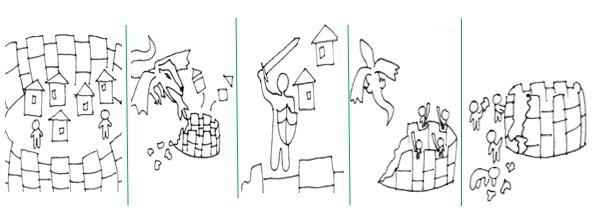 Scientific definition
Scientific definitionHooke’s Law states that, “the strain in a solid is proportional to the applied stress within the elastic limit of that solid.” The law and f ...
Ideal gas
 Scientific definition
Scientific definitionIn the ideal gas, the forces of interaction between the particles (atoms, molecules) of the gas are neglected. When the temperature of the diluted ...
Inclined plane
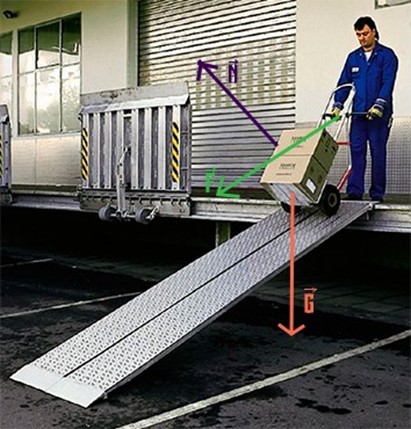 Scientific definition
Scientific definitionAn inclined plane, also known as a ramp, is a flat supporting surface tilted at an angle, with one end higher than the other, used as an aid for r ...
Interaction of electrical charges
When two bodies are rubbed, they become electrified An electrified body transfers part of the electrical charge to an unelectric body. Homogeneous ...
There are no links
Kinetic energy
 Scientific definition
Scientific definitionKinetic energy is a quantity that characterizes the movement of bodies. It characterizes the ability of bodies to do work to change their speed. ...
Kirchhoff's first law (junction law)
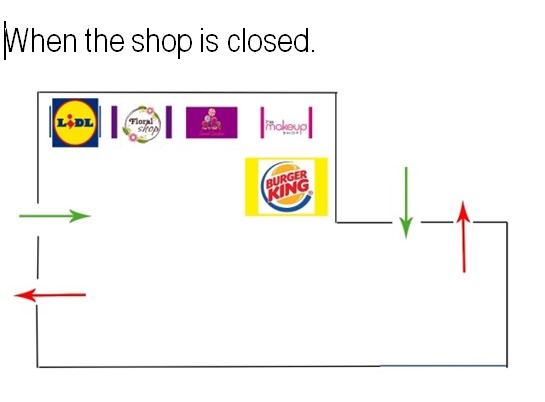 Scientific definition
Scientific definitionThe numeric value of the currents that enter the node is equal to that of the currents that exit the node. A node is any point in a circuit in ...
Kirchhoff's Junction Law
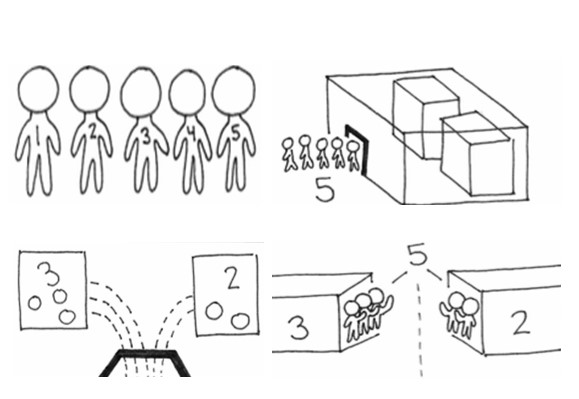 Scientific definition
Scientific definitionThe law states that sum of the currents coming into a junction has to equal the sum of the currents going out. Essentially, it is an application o ...
Kirchhoff's Loop Law (Voltage Rule)
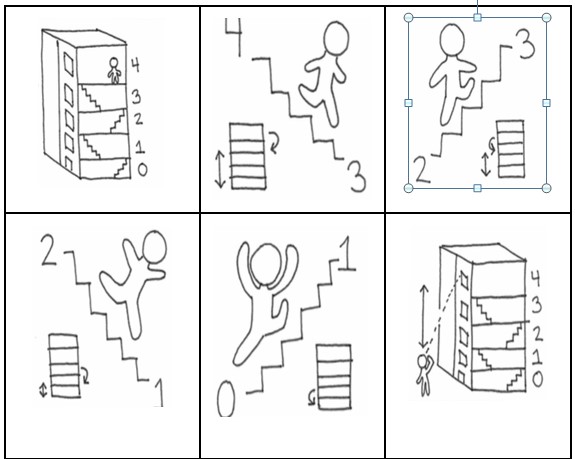 Scientific definition
Scientific definitionThe directed sum of the voltages around any closed loop is zero. Vrise-Vdrop = 0. V4-V3-V2-V1=0. ...
LAW OF ARCHIMEDES
 Scientific definition
Scientific definitionArchimedes' principle states that: If a solid body floats or is submerged in a liquid - the liquid exerts an upward thrust force - a buoya ...
Light refraction
Light rays change direction when they reflect off a surface, move from one transparent medium into another, or travel through a medium whose compo ...
Magnet
Constant magnets attract various iron objects. For example a key, a needle, a stapler and scissors.
There are no links
Magnet
Magnet, any material capable of attracting iron and producing a magnetic field outside itself. By the end of the 19th century all the known elemen ...
Magnetic effect of electric current
The electricity and magnetism are linked to each other and it is proved when the electric current passes through the copper wire, it produces a ma ...
Melting of an amorphous substance
 Scientific definition
Scientific definitionAmorphous substances are characterized by the absence of strict regularity in the arrangement of their building particles with respect to each oth ...
Newton's law
Newton's three laws of motion may be stated as follows: Every object in a state of uniform motion will remain in that state of motion ...
There are no links
Nuclear fission
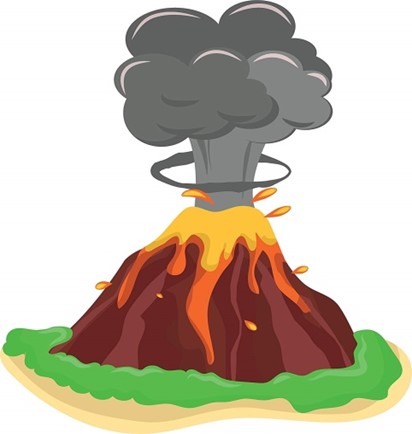 Scientific definition
Scientific definitionNuclear fission is either a nuclear reaction or a radioactive decay process in which the nucleus of an atom splits into smaller parts. The fis ...
Pascal's principle
Pascal's or the principle of transmission of fluid-pressure is a principle in fluid mechanics given by Blaise Pascal that states that a pres ...
Photoelectric effect
 Scientific definition
Scientific definitionPhotoelectric effect happens when electrons are emitted from matter such as metals. It takes a certain amount of energy for an electron to escap ...
Power
A physical quantity that is determined by the rate of work transferred per unit time. Unit of measure or W (1Joul per second or 1Wat ...
Pulley
Pulley, in mechanics, a wheel that carries a flexible rope, cord, cable, chain, or belt on its rim. Pulleys are used singly or in combination to t ...
Random walk & Brownian motion
A random walk is a dynamic process determined by stochastic variables. It can be used as a quantitative model for the description of Brownian motio ...
There are no links
SECOND PRINCIPLE OF THE MECHANICS
 Scientific definition
Scientific definitionFor a given body with mass, the resultant force F [N] acting on the body is equal with the product between the mass m [kg] and the body’s accele ...
Semiconductors
Semiconductor, any of a class of crystalline solids intermediate in electrical conductivity between a conductor and an insulator. Semiconductors a ...
Solid aggregate
 Scientific definition
Scientific definitionIn solids, the building particles are firmly bonded to each other. They are located at close distances and are located in a strictly defined way. ...
Solid bodies with crystal grid
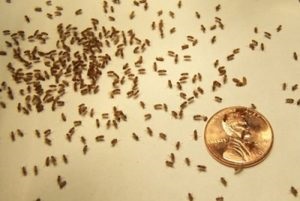 Scientific definition
Scientific definitionSubstances in solid state are characterized by a crystal grid. The constituent particles in solids are bound by healthy valence chemical bonds. Th ...
Sound
 Scientific definition
Scientific definitionSound is a longitudinal mechanical wave - the vibration of matter, which is transmitted as a periodic change in pressure (due to compression and d ...
Starting body
 Scientific definition
Scientific definition
The body against which we determine whether a body is in motion or at rest.
The First Law of Thermodynamics
 Scientific definition
Scientific definitionAlso known as the Law of Conservation of Energy, the First Law of Thermodynamics states that, “energy cannot be created or destroyed in an isola ...
The main quantum number
 Scientific definition
Scientific definitionAs it increases, the orbital becomes larger and the electron spends more time farther from the nucleus. As n increases, the electron is also at a ...
The physical states of water
 Scientific definition
Scientific definitionWater is known to exist in three different states: as a solid (ice), liquid (water) or gas (steam). Water molecules contains one oxygen and two� ...
There are no links
The properties of water
The properties of water: surface tension, the cohesion forces and surfactants.
THIRD PRINCIPLE OF THE MECHANICS
 Scientific definition
Scientific definitionIf a given body exerts a force on a second body, the second body will exert in the same time a force equal in magnitude and opposite in direction ...
THIRD PRINCIPLE OF THE MECHANICS (2)
 Scientific definition
Scientific definitionIf a given body exerts a force on a second body, the second body will exert in the same time a force equal in magnitude and opposite in direction ...









